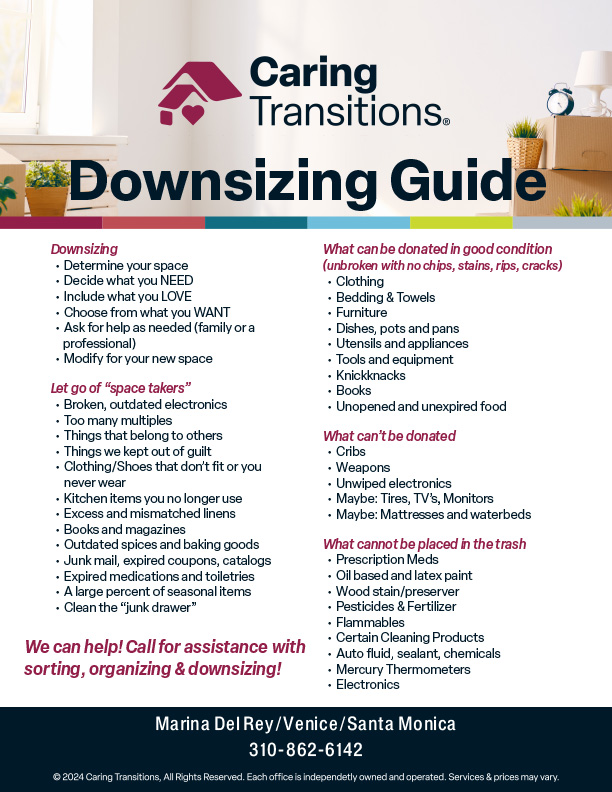13th Annual Food Drive 2025

12TH ANNUAL PAPER SHREDDING EVENT
Grand Opening New La Cienega Farmers Market 18th Street

How to get property tax relief if your house burned in the fires
 Property owners are entitled to property tax relief now and when they rebuild or move.
Property owners are entitled to property tax relief now and when they rebuild or move.
If you’ve lost your home or business in this month’s wildfires, you can receive substantial relief on your property taxes now and in the future — whether you decide to rebuild or move.
You will be able to reduce what you owe immediately and defer payment. Ultimately, you can retain the taxable value of your house prior to the fires, which means lower taxes than if you were building a new home or moving somewhere else under normal circumstances.
Here’s a guide for how you can get help and details on options you have going forward:
What should I do right now?
For any home or business owner with $10,000 or more in damage to their property, the first step is filing a form with the Los Angeles County Assessor’s Office. The form is called “Property Damaged or Destroyed by Misfortune or Calamity” or “ADS-820” and you can access it at this link. You have one year following the date of the disaster — until January 2026 — to file the form.
Once the form is approved, the assessor’s office will reassess your property. If your home or business was destroyed, the taxable value will be based only on the land. A lower value will remain in effect until the property is fully repaired, restored or reconstructed.
Under an executive order signed by Gov. Gavin Newsom, you can wait until April 2026 to file this year’s property taxes without penalty. You can also apply to the Los Angeles County Treasurer and Tax Collector to seek longer deferrals of up to four years.
What happens if I decide to rebuild my home?
If you rebuild your house as it was before — or even up to 20% larger — you’ll pay the same property taxes as before.
California has a unique property tax system inaugurated by the passage of Proposition 13 in 1978. It limits property taxes to 1% of a home’s taxable value, which is based on the year the house was purchased, and restricts how much that taxable value can go up every year, even if a home’s market value increases much more.
Let’s assume that a house destroyed by the fires had a $1-million market value and a $600,000 taxable value this year. Because of voter-approved bonds in addition to the base 1% rate, the property owner would have paid about $6,600 in taxes.
If this homeowner rebuilds the home to roughly the same specifications — similar square footage, same number of bedrooms and bathrooms — then the homeowner simply retains the existing $600,000 taxable value for the new home and therefore has the same tax bill. The benefit applies if a property owner wants to replace what was a 1940s ranch house with a home constructed to today’s fire code and other modern standards.
Homeowners can expand their footprint by up to 20% without triggering a higher assessment. For those that want to go beyond that, or change the use of their property by building an accessory dwelling unit for example, additions will be assessed at market value with their tax bill increasing accordingly.
What if I want to move instead?
There are multiple options to retain your prior property tax benefits if you move, including to a more expensive house.
Let’s first tackle moving to a new home within L.A. County. You maintain your prior taxable value entirely if the new home isn’t more than 20% higher than the market value of your prior one.
Refer back to our example home with a market value of $1 million and taxable value of $600,000. In this scenario, you could buy a $1.2-million home and your taxable value would still be $600,000.
Any additional market value in a newly purchased home would be added onto your taxable value. If you bought a $1.3-million home, the taxable value would be $700,000, calculated by taking the existing $600,000 and adding the extra $100,000 above the allowable 20% increase.
If you’d like to move elsewhere in California, you could transfer your taxable value to a new home that’s the same market value as the one destroyed. So using our example again, you could buy a $1-million home in Santa Barbara County and transfer your $600,000 taxable value to that property.
For buying more expensive homes outside of L.A. County, the taxable values would be blended. A $1.3-million home in Santa Barbara would result in a taxable value of $900,000. Tax savings here are significant compared to buying a new home otherwise. A homeowner with a taxable value of $900,000 pays roughly $9,900 a year in taxes while one with a taxable value of $1.3 million pays about $14,300.
There could be slightly more generous benefits for disaster-affected L.A. homeowners who move to Orange, San Diego, Ventura or 10 other counties that have opted into a related property tax relief program.
You can only receive a property tax benefit for rebuilding or moving, not both.
Where can I get help directly or find out more?
These rules have different qualification deadlines and other nuances that will affect your specific situation. For that reason, it’s best to connect with the county assessor’s office for assistance. The office has staff members available at disaster centers on both the Westside (UCLA Research Park West, 10850 W. Pico Blvd., Los Angeles) and Eastside (Pasadena City College Community Education Center, 3035 E. Foothill Blvd., Pasadena).
Assessor Jeff Prang is encouraging affected homeowners to file their damaged property form and said that his office is planning to ensure all qualified property owners receive immediate relief.
“While it’s helpful if they fill out the forms, it tells us specifically who they are and how to reach them, we’re going to be reassessing that property whether they ask us to or not,” Prang said.
Prang also warned homeowners not to fall prey to scams from third parties promising additional property tax relief for a fee.
“There’s nothing a company can do that’s going to get anything different than if you do it yourself,” Prang said. “There’s no reason for people to pay money.”
Additional resources are available online on the websites of the assessor and state Board of Equalization.
Liam Dillon
Los Angeles Times.
11th Annual Food Drive Update
Wow we did it again!! ![]() So grateful to all our amazing neighbors in Faircrest Heights and Reynier Village for your generous donations this year! It warms my heart to say we collected over 250 food bags and toys for the Fame Food Drive and Sofa Food Pantry. I was deeply touched by your generosity. If you know someone who needs a helping hand, please reach out to me, we are always here help. This is what the holidays are all about the spirit of giving! With Gratitude,
So grateful to all our amazing neighbors in Faircrest Heights and Reynier Village for your generous donations this year! It warms my heart to say we collected over 250 food bags and toys for the Fame Food Drive and Sofa Food Pantry. I was deeply touched by your generosity. If you know someone who needs a helping hand, please reach out to me, we are always here help. This is what the holidays are all about the spirit of giving! With Gratitude, ![]() Laura
Laura

Thank you and Happy Holidays!
11th Annual Food Drive 2024
Purchase & Refinance – Community Based Program Exclusive to Insignia Mortgage
Dream Home Loan Program
11TH ANNUAL PAPER SHREDDING EVENT
- 1
- 2
- 3
- …
- 14
- Next Page »





